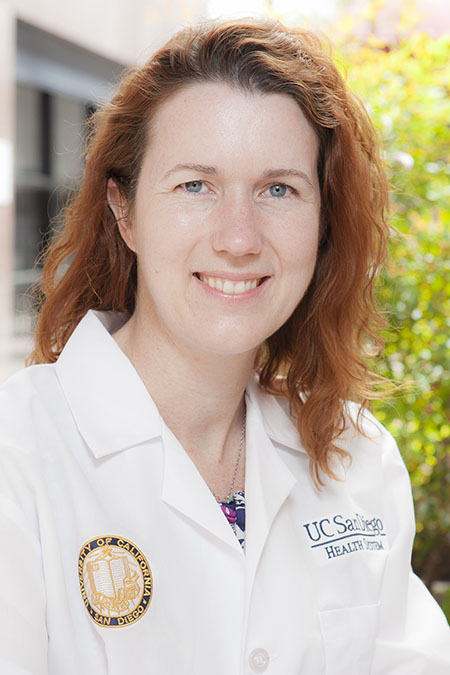Student Medical Records at UC San Diego Make Epic Change and a California First
Improved medical record management means better care during COVID-19 pandemic
Published Date
By:
- Jackie Carr
Share This:
Article Content
Across the nation, top universities offer comprehensive health services to more than 20 million students in the form of primary, urgent and mental health care services. Management of medical records within student health centers is often outdated and unconnected to local health systems or the students’ home health care providers, creating significant challenges to providing safe and consistent health care to students, especially in the current COVID-19 pandemic.
Six months before COVID-19 hit, UC San Diego was the first university in California to connect its almost 40,000 student health records to the electronic health record platform of its top-ranked academic medical center, UC San Diego Health. The experience has created a model for other colleges and is described in the November issue of Journal of American College Health.
“After the medical record transition, we observed significant improvements to the provision of care for UC San Diego students. The goal was to enhance care coordination, increase the availability of vital medical information, and offer access to the resources and expertise of UC San Diego Health,” said Christopher Longhurst, MD, chief information officer at UC San Diego Health. “These benefits were amplified during the pandemic. By sharing health records, we’ve improved the continuity of care for students through same-day video visits, improved turnaround for radiology results, and accessible COVID-19 testing.”
Thousands of medical records were converted to UC San Diego Health’s Epic medical record management system in a safe and secure HIPAA- and FERPA-protected environment. Given the wide prevalence of Epic’s electronic health record system, which serves more than 50 percent of the U.S. population, onboarding the students meant immediate connections to their local and out-of-state health records.
“Here’s what’s impressive,” said Longhurst. “When the medical records went live, we instantly had access to 93,000 unique medical record documents from 262 health systems in the U.S. Over the course of six months, almost 250,000 unique documents were shared from clinics and hospitals across California, Oregon, Philadelphia, Virginia, Wisconsin, and numerous other states. The institutions included CVS, children’s hospitals and cancer hospitals. Imagine how important these medical records were to understanding the big picture needs of our students.”

Marlene Millen, MD, senior author of the published study and chief medical information officer, UC San Diego Health
Marlene Millen, MD, senior author of the published study and chief medical information officer, agreed.
“When you have a student’s full documented medical history, you can undoubtedly improve the delivery of care, especially when it’s shared care with other providers,” said Millen, who is also a practicing internist at UC San Diego Health. “Students may not be able to recall all details of their medical histories. Because Epic is widely used, we could access records from their past and current providers. While most students are generally healthy, many have medical issues. With this system, you can see what the student’s regular primary doctor is prescribing. Knowing if a student is taking insulin, birth control, Ritalin or any prescription is vitally important — especially during a pandemic.”
“Being integrated into a health system during COVID-19 gave us access to a number of tools which streamlined our ability to care for our students,” added Angela L. Scioscia, MD, interim executive director of UC San Diego Student Health and Well-Being. “First of all, we were connected to a very efficient laboratory process for rapid COVID test results that were recorded in the students’ charts within 24-hours. This meant quick notification to students with instructions on how to quarantine and receive care, if needed.”
The integration offered additional health resources to a campus striving to maintain a safe environment during COVID-19. When stay-at-home orders went into place, the student health team was able to switch to video visits for mental health visits with no downtime.
“UC San Diego Student Health and Well-Being converted to video visits for more than 95 percent of students who utilize campus health services,” said Scioscia. “The video visits meant uninterrupted care for students and was critical to students seeking mental health care during an extraordinary stressful period of time.”
When UC San Diego implemented its Return to Learn initiative, more than 1,480 students successfully self-tested for COVID-19 over three weeks, demonstrating the feasibility of this approach to large-scale SARS-CoV-2 screening. Because all student records were already in Epic, it was straightforward to develop a registry of students and place bulk orders for the tests. Results posted directly to the medical record and its online portal for immediate access by student.
Structured data in the integrated EHR is also available for large-scale analysis and automated public health reporting. Future studies may evaluate interventions for depression and eating disorders.
“With the depth of demographic information available, including race, ethnicity, and language, as well as sexual orientation and gender identity, analysis of potential health disparities is also possible,” said Scioscia. “We can do good work on health disparities because we get insight into our population and explore whether there are disparities in the delivery or the outcomes for our student population.”
“Our advice to other campuses with a student health service is to work with your university or local hospital to share electronic health records. Based on our experience, the care provided to the students is immediately enhanced because of the ability of the student health center to access far more resources and expertise than sitting independently,” said Longhurst. “The shared health records benefit the student immediately and long after they graduate.”
UC San Diego Student Health and Well-Being offers campus-based health services to enrolled students with an annual volume of approximately 85,000 visits, including primary, urgent and preventive, mental health, plus optometry, vaccinations, radiology, laboratory and pharmacy services.

Return to Learn is UC San Diego’s nationally recognized, evidence-based comprehensive safety program to incrementally return to in-person activities on campus. Photo credit: Erik Jepsen, UC San Diego Publications
Located on the La Jolla campus, UC San Diego Student Health and Well-Being is accredited by both the Accreditation Association for Ambulatory Health Care and the International Accreditation of Counseling Services. The center is comprised of Student Health Services (SHS), Counseling and Psychological Services (CAPS), and Health Promotion Services.
Return to Learn is UC San Diego’s nationally recognized, evidence-based comprehensive safety program to incrementally return to in-person activities on campus. The plan includes face-covering requirements, frequent asymptomatic and symptomatic testing, wastewater monitoring, case isolation, exposure notification and contact tracing, aided by the use of a new app that lets users know if they’ve had contact with infected people. Additionally, the campus is maintaining a low-density population. Approximately 7 percent of classes are in-person with 22 percent of students registered in at least one of these classes, and the rest taking advantage of online offerings.
UC San Diego co-authors include: J. Jeffery Reeves, Stacie San Miguel, Reina Juarez, Joseph Behymer, Kevin M. Ramotar, and Patricia Maysent.
To learn more about UC San Diego Student Health visit: wellness.ucsd.edu/studenthealth
Share This:
You May Also Like
Stay in the Know
Keep up with all the latest from UC San Diego. Subscribe to the newsletter today.



